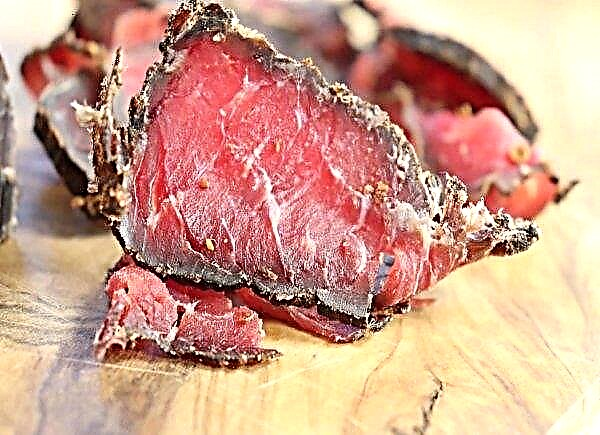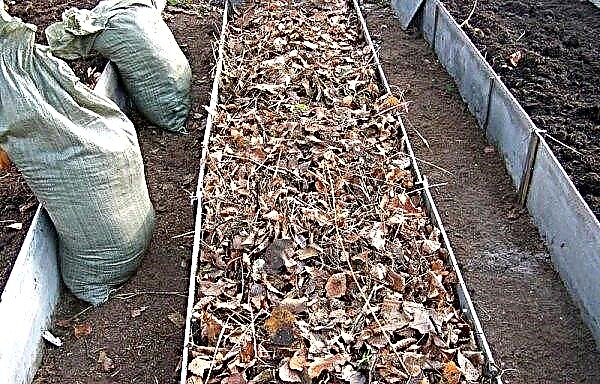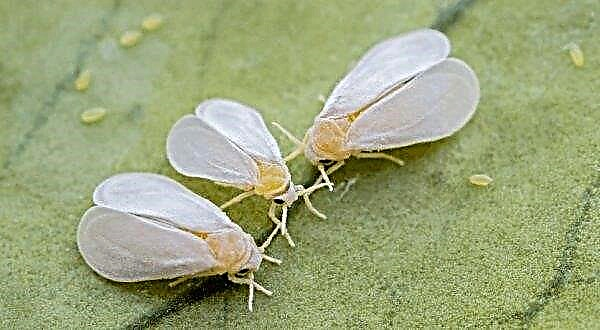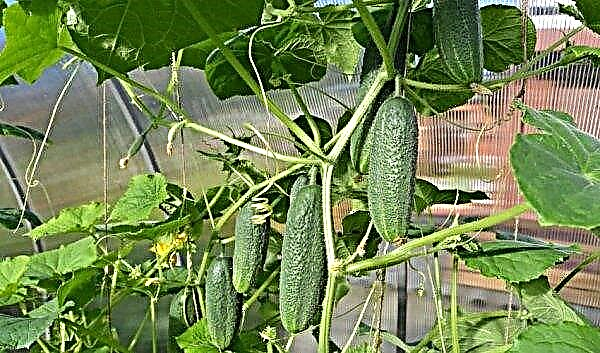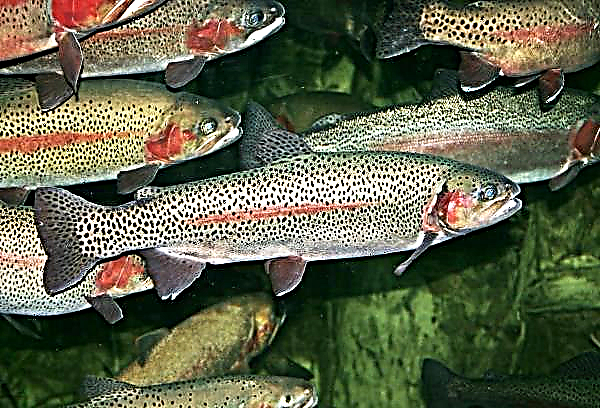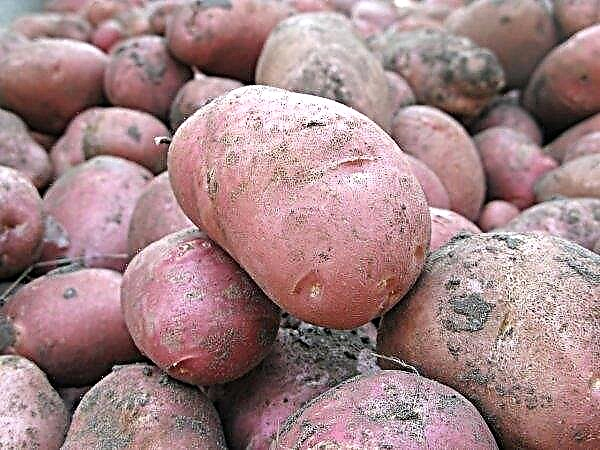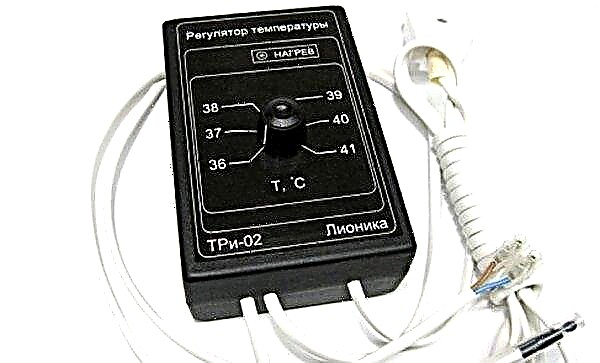Lovers of indoor plants with bright and beautiful flowers should definitely pay attention to the magnificent wallot. This flower is not as famous as noble and delicate orchids, but it looks no less spectacular. How to choose a wallot without losing its huge variety of species, as well as provide it with conditions for a long and magnificent flowering, is described in this review.
Homeland of the plant
Vallota, aka cirtanthus, is a genus of bulbous perennials, one of 66 representatives of the Amaryllis family. Unlike many other inhabitants of the tropics, this plant has a very narrow distribution area: in the wild, wallota can only be found in the subtropical strip of the southwestern coast of Africa - not far from Cape of Good Hope, in the Cape region, which represents a unique natural ecosystem, where many true wonders of floristry. A thermophilic plant can be grown in open ground mainly only in the tropical and subtropical zones, therefore it is more familiar and loved as a greenhouse or indoor flower.
A thermophilic plant can be grown in open ground mainly only in the tropical and subtropical zones, therefore it is more familiar and loved as a greenhouse or indoor flower.
Did you know? Cirtanthus was first discovered and described by the French botanist Pierre Vallot, who included a new species in his catalog of garden plants, but this scientific work, created in 1623, was never published. However, the Wallot, which received the name of its discoverer, almost immediately won many fans and acquired the status of a cultivated plant.
Botanical description of wallota species
Cirtanthus has the following botanical characteristics:
| Root system | The bulb is oval, the surface layer is a kind of scales, brown on the outside and pink on the inside. |
| Stem | Single, long, flat and thick. Inside is hollow. In length, it can grow from 10 to 60 cm (according to some sources - up to 90 cm), depending on the type and conditions of detention. It ends with a peduncle. |
| Leaves | Long and flat, resembling a belt or sword in shape (width - from 1 to 3 cm, length - slightly smaller than the size of the stem). Grow simultaneously with the stem. The color is saturated green, at the base - brown or burgundy. The central vein is barely noticeable. Come out from one outlet in the shape of a fan. |
| Inflorescence | Umbrella without leaves. The number of flowers ranges from 3 to 9. |
| Flowers | Erect, bell-shaped with 6 petals pointed at the ends. The diameter is about 5 cm, the size of the petals is up to 5 cm in length and 2.5 cm in width. The stamens are up to 2.5 cm long. The petals are bright red, white or raspberry. |
| Fetus | Angular box with black seeds. Seeds are flat, have a wing at the base. |
From the point of view of modern science, there are 3 main types of wallots:
- beautiful wallota (Vallota speciosa);
- purple wallot (Vallota purpurea);
- cinnabar clivia (Vallota miniata)
However, there are much more varieties and hybrids of indoor plants today. For example, such varieties are popular:
However, it must be understood that the vast majority of these species are not cirtanthus in the strict sense of the word. As a rule, these cultivated forms are obtained by crossing Wallots with other plants, such as, for example, lodgesianus, sanguineus or montanus.Let us consider in more detail some varieties of the plant.
Did you know? In the middle of the last century, many plants of the Cape region, including Wallot and her closest relative, Clivia (named after Charlotte Clive, Duchess of Northumberland and governess of the English Queen Victoria), were adapted to some coastal regions of the USSR. In particular, today they can be found in the botanical gardens of the Crimea and the Caucasus.
Vallota is beautiful
| Bulb | The diameter is about 4 cm in an adult plant, but may change with age |
| Leaves | The colors of dark olives are leathery, about 3 cm wide and 45 cm long. |
| Stem | Reaches 60 cm in height |
| Inflorescences | Consist of an average of 7 flowers, directed up |
| Flowers | Separate petals, in shape resembling a lily with pointed ends, the color is bright red |
| Flowering period | The end of summer - the beginning of autumn |

Vallota Magenta
| Bulb | Elongated. A distinctive feature is the brown primary color and the reddish area on the “neck”. |
| Leaves | Saturated green, leathery, narrow and not very long (25-30 cm) |
| Inflorescences | In the shape of an umbrella, the number of flowers is from 2 to 8 |
| Flowers | Large, up to 6 cm in diameter. The color is deep red. The petals are pointed, in shape more like a bell. |
| Flowering period | The beginning of autumn, however, with good maintenance, can bloom twice a year |

White Cream Beauty
| Bulb | No distinguishing features |
| Stem | Up to 40 cm in length |
| Leaves | Bright green |
| Inflorescences | Form an average of 6 flowers |
| Flowers | Delicate beige |
| Flowering period | Autumn (the national name for the variety is autumn lily) |

"Pink Diamond"
| Bulb | No distinguishing features |
| Stem | Up to 30 cm in height |
| Leaves | Green, elongated |
| Inflorescences | Form an average of 6 flowers |
| Flowers | Pink (hence the name of the hybrid is a pink diamond) |
| Flowering period | The end of summer - the beginning of autumn |

Care and conditions for growing at home
In general, the wallota cannot be called a very capricious plant, but the frequency, duration and intensity of flowering directly depends on how you care for it. Therefore, the basic requirements for the environment of cirtanthus should be carefully studied before acquiring a flower.
Location selection
The good news is that the pot in the wallot can be safely installed on almost any side, except perhaps the north. The main thing that should be provided to the South African plant is the presence of a sufficient amount of sun, especially in the morning. The rest of the cirtanthus knows how to adapt well to the proposed conditions and can bloom equally well both at the south window, and at the west or east.
Important! The optimal arrangement of the pot with the wallot is the east or west window in summer and the north in winter.
With great gratitude, the plant will react if, in the warm season, it is taken out to the open balcony or even taken to the cottage. However, while the wallota should remain in the pot, it should not be planted in open ground, since transplanting at the beginning and at the end of the season is too much stress for the bulb.
Humidity and temperature
The climate in the homeland of the Wallota is similar in type to the Mediterranean. The temperature regime here for most of the year is in the range from 0 to +12 ° C, and the relative humidity does not exceed 70%. With such a habitat in wild conditions, the wallot is undemanding neither in temperature regime nor in humidity. A plant can bloom in a sufficiently dry room if it is provided with proper watering. The optimum temperature for the content of cirtanthus as a houseplant is a range between +23 and +24 ° C. But in winter, it is better for the flower to be in cooler conditions, which meets its natural needs as much as possible and allows counting on more intensive flowering next year.
The optimum temperature for the content of cirtanthus as a houseplant is a range between +23 and +24 ° C. But in winter, it is better for the flower to be in cooler conditions, which meets its natural needs as much as possible and allows counting on more intensive flowering next year.
It is good if the wallota wintered at temperatures from +7 to +10 ° C (for storing the collected bulbs, it is advisable to reduce this figure by another couple of degrees). However, if you leave the pot in the same place in winter, this will not have critical consequences for the plant. But the minimum temperature threshold that a flower can withstand is about +5 ° C.
Important! Cirtantus can adapt to preset temperature conditions and humidity, but it reacts very poorly to diurnal changes in these parameters. Also, the plant does not tolerate drafts.
Lighting
Vallota is photophilous, but direct sunlight is fatal to her delicate petals. Cirtanthus lighting needs a natural, bright, but at the same time diffuse. Eastern and western windows are preferable for installing a pot precisely for the reason that a flower must be shaded from midday heat. Lack of lighting also adversely affects flowering, as well as its excess, therefore, on the northern windows, especially on long cloudy days, the flower must be provided with additional illumination. The exception is the period when the plant is at rest, and at such a time it will feel great in partial shade.
Lack of lighting also adversely affects flowering, as well as its excess, therefore, on the northern windows, especially on long cloudy days, the flower must be provided with additional illumination. The exception is the period when the plant is at rest, and at such a time it will feel great in partial shade.
Dredging and selection of containers for planting
Vallota prefers neutral soil: a pH in the range of 6.5–7.0. In this case, the soil must necessarily be sufficiently light (loose) and nutritious, it is good to conduct air and moisture. You can choose such a substrate in any flower shop (in fact, any universal mixture for indoor plants is suitable), however, if desired, you can make it yourself. As a basis, it is necessary to take sheet or soddy soil (3 parts), to which 1 part humus, peat and river sand of a large fraction should be added.
Important! A prerequisite for a good flowering wallota is a tight container. In a spacious pot, the plant begins to intensively form young bulbs, "distracting" from its main decorative task - to delight the owner with luxurious flowers.
An indispensable requirement for planting is a drainage layer with a volume of at least 1/3 of the pot, in order to prevent stagnation of water in the pot. The bulbous plant also does not need a large depth of the pot. It is better to pick up wide flowerpots with a diameter of about 10 cm, but you can take a wider container and plant several bulbs in it so that a distance of 4-6 cm is left between each bulb and the edge of the pot. Any houseplant feels more comfortable in pots made from natural materials, such as clay. A ceramic container without glaze is also suitable. It is undesirable to use plastic, in such a flowerpot the air circulates very poorly, which means that the risk of developing pathogens is high.
Any houseplant feels more comfortable in pots made from natural materials, such as clay. A ceramic container without glaze is also suitable. It is undesirable to use plastic, in such a flowerpot the air circulates very poorly, which means that the risk of developing pathogens is high.
Watering and fertilizer
Proper watering is perhaps the most important secret to growing cirtanthus. The abundance of moisture affects the bulb very badly; therefore, even in summertime, the wallot should not be poured. Watering is carried out as the topsoil dries. The above, of course, does not mean that you can forget about the plant and let the earthen coma in the pot turn into a solid stone. It is best to water the flower often, but little by little. It is important to use soft (settled) water at room temperature, the flower should not be watered with cold water.
In winter, the plant needs even more moderate watering than in summer - it is important to clearly observe this seasonal contrast. Cirtanthus should be fed about 1 time in 2 weeks during the period of active vegetation (from the end of winter until the flowering stops and growth stops). Both organic and mineral mixtures are suitable as fertilizers, however, during the laying of buds and their blooming, the nitrogen content in top dressing is better to reduce.Important! Vallota, like an orchid, can forgive the owner of insufficient watering, but not excessive.
 To provide allot with all the necessary nutrients, it is best to purchase complex supplements for bulb or flowering plants. In spring and summer, the flower is fed 2 times a month with special fertilizers for bulb plants in accordance with the manufacturer's instructions.
To provide allot with all the necessary nutrients, it is best to purchase complex supplements for bulb or flowering plants. In spring and summer, the flower is fed 2 times a month with special fertilizers for bulb plants in accordance with the manufacturer's instructions.Transplant and pruning
Since cirtanthus blooms the better, the closer it is in the flowerpot, too frequent transplants to the decorative properties of the plant only harm. To maintain the flower, it is enough to renew the topsoil in the pot once every 3 years and at about the same frequency to separate the young bulbs from the mother.
Recommended Reading

If a transplant is already planned, this procedure should be carried out in a dormant phase - you can not disturb the flowering wallot.
You can also wait until the vegetation begins and, after replanting the flower, immediately start the “awakening” watering, but until the plant hardens, the amount of moisture entering the pot should be strictly limited.
The cirtanthus does not need forming pruning, since it consists of a single peduncle stem. However, it cannot be cut off after complete flowering.
After a while, the stem will dry out and become dead, and only at that moment can it be carefully cut from the base of the bulb. The same applies to leaves: green plates should remain intact, yellowed and completely wilted - are removed.
Breeding
Despite the fact that theoretically, wallota can be propagated by seed and dividing the bush (cutting off a bulb fragment), the simplest and most effective way to obtain new plants is to use young bulbs - children. It is all the more convenient to do this because the cirtanthus has one interesting feature: the mother bulb pushes its small offspring to the surface, so sometimes it’s not even necessary to dig out the whole root to separate them.
Important! A non-flowering plant is best left alone and not transplanted until it is strong enough and fills the pot space with new children.
To know this feature is very important for the correct landing of rolls. Young bulbs collected from the surface of the pot or taken from the upper part of the tuber of an adult plant should never be buried completely in the soil. A new baby will be no more than half in the ground and then begins to "settle" in the pot on her own. At the first stage, the main element in feeding young Wallot is nitrogen, which provides the fastest possible set of green mass - leaves and stem. A new plant begins to bloom around the 3rd or 4th year after planting. The optimal age of the bulb for planting is 4–5 months, young children root poorly. As the emerging new bulbs gradually begin to interfere with the mother, it is advisable to select them every year. Despite such a long wait for the long-awaited flowers from the bulbota grown from bulbs, other methods of plant propagation give an even longer growth period.
The optimal age of the bulb for planting is 4–5 months, young children root poorly. As the emerging new bulbs gradually begin to interfere with the mother, it is advisable to select them every year. Despite such a long wait for the long-awaited flowers from the bulbota grown from bulbs, other methods of plant propagation give an even longer growth period.
When using its seeds to obtain a new generation of cirtanthus, they should be carefully removed from the dried capsule and sown immediately, avoiding deep penetration into the soil. It is best to fill the pot or box with a substrate up to half, spray the seeds from above and then cover them slightly with a thin layer of soil.
From above, the drawer is tightened with a film and put on germination in a cool (temperature mode - from +16 to + 18 ° C), well-lit place. After the emergence of seedlings, the film is removed, the sprouts are watered by spraying with all possible precautions. After the young plants grow up to 4–5 cm, they pick, and after another 1.5–2 months they are planted in separate small pots.
Did you know? In the wild, young bulbs of plants of the amaryllis family gradually begin to be drawn into the depth of the soil with the help of specially arranged roots, and in the process of such movement, the children can significantly separate from the mother plant, capturing more and more new territories.
And, perhaps, the most extreme way to propagate wallots is by dividing the bulbs. After flowering, the plant is removed from the pot, the bulb is separated and sent for wintering to a cool place. In spring, it should be cut into 4 parts with a very sharp and clean knife, placed for several minutes in a weak solution of potassium permanganate, and then buried by 2/3 in a substrate consisting of peat and sand in equal proportions.Rooting occurs under the film at room temperature (above +20 ° C).
It should be noted that wallota propagation by seeds and dividing the bush requires serious skills and is associated with a high probability of failure, while even a person who does not have much experience in floriculture can root onion bulbs, observing the requirement for a relatively small depth.
Rest period
Bulbous plants cannot bloom constantly, moreover, after the flowering period is over, the plant needs to be restored. Vallota is no exception. This flower is characterized by the seasonal rhythm of life - the alternation of the growth phase and the resting phase. The task of the grower in this situation is to correctly understand the needs of the plant and provide him with optimal conditions corresponding to each phase. The resting phase begins almost immediately after dropping the last flower. But it’s worthwhile to prepare for it in advance, after about 2 weeks, starting to gradually change the regime of watering and feeding so so that by the end of this period, provide the flower with such care, in which:
The resting phase begins almost immediately after dropping the last flower. But it’s worthwhile to prepare for it in advance, after about 2 weeks, starting to gradually change the regime of watering and feeding so so that by the end of this period, provide the flower with such care, in which:
- watering - limited, but not completely terminated; the plant should receive a minimum of moisture, preventing the bulb from completely drying out, but not giving it strength to grow;
- top dressing - terminated;
- temperature - lowered to + 12–15 ºC (some species require even cooler air).
At the beginning of the growing season (depending on the species, from the end of winter to mid spring, as soon as the first green shoots appear on the soil surface), the flowerpot is returned to the sunny side and begins to be watered, and in this case, no adaptation period needs to be observed. The exception is the situation when the wallot was transplanted before the start of awakening.
Did you know? Some varieties of wallots, especially those obtained by crossing with other plants, have their own “views” on the seasonal change in the phases of life. For example, there are hybrids that bloom in winter and, accordingly, fall into hibernation in the summer. But the most unusual, perhaps, is the so-called "fire lily", which blooms only when a strong fire occurs, and a large amount of smoke is present in the air.
Unlike many other flowering plants, in a dormant phase, cirtanthus should not completely discard foliage. Moreover, if you trim it, the flower will react to this procedure very painfully. However, slightly sagging and dried leaves during this period are considered normal, you should not worry about this.
It is also important to know that the above-described alternation of periods of growth and dormancy is typical only for adult specimens. Young bulbs should be watered and fed throughout the year without a break, so they will form faster and reach the size necessary to start flowering.
Possible growing problems
Of course, the biggest problem that can arise when growing wallots is that the plant does not bloom. There are several reasons why this happens. We have already mentioned some, but still summarize:
- Pot too big (cirtanthus directs forces to growth, not flowering).
- Pot too tight (oversaturation of the plant with young bulbs leads to depletion of the soil and a lack of nutrients in it).
- Overheating or insufficient watering (the buds dry and fall off, an additional symptom in this case is yellowed leaves).
- Waterlogging (the root rots, which interferes with flowering).
- The plant is not provided with a rest period (vital activity is not enough for flowering).

Disease
Cirtanthus, like other bulbous, primarily suffers from various types of root rot (for example, fusariosis), the development of which can provoke:
- excess watering;
- lack of drainage (stagnation of water in the pot);
- improperly selected soil mixture or material from which the pot is made, as a result of which the normal circulation of oxygen in the soil does not occur;
- overheating or hypothermia, including as a result of irrigation with cold water.
Pests
Indoor plants do not very often become victims of dangerous insects - as a rule, this happens if the pot was brought out to fresh air or came into contact with an infected individual. Most often on parasites spider mite, sometimes a flower can attack scale shield.
The first of these pests is very easy to recognize: in addition to the fact that the inner part of the leaf is covered with small bright dots, characteristic threads similar to cobwebs appear between individual leaves (the tick itself is too small, but traces of its vital activity are very noticeable).
The insect shield is also easier to recognize by the changes that it brings to the appearance of the plant, since this insect is also small in size, and also moves very quickly to be noticed. The flowers affected by the scabies are covered with a disgusting sticky substance, which can even drain onto the windowsill. Modern insecticidal drugs usually help to effectively deal with any of the most common pests, so there is no particular need to establish an accurate diagnosis and identify the parasite. But if the problem is identified at an early stage, you can try not to resort to the use of pesticides, but simply thoroughly wash the stem and leaves of the infected plant with a soap solution and then rinse under running (preferably hot) water.
Modern insecticidal drugs usually help to effectively deal with any of the most common pests, so there is no particular need to establish an accurate diagnosis and identify the parasite. But if the problem is identified at an early stage, you can try not to resort to the use of pesticides, but simply thoroughly wash the stem and leaves of the infected plant with a soap solution and then rinse under running (preferably hot) water.
Vallota is not a very well-known indoor plant in our country, which in reality can become a real decoration of any windowsill. This flower is less demanding on environmental conditions than many other representatives of the tropical fauna, and to propagate it by simple transplantation of young bulbs is not at all difficult.]

